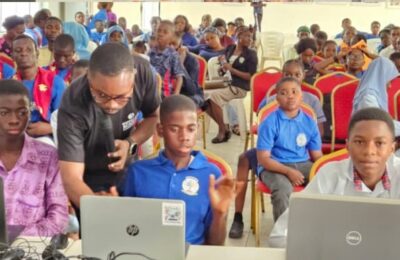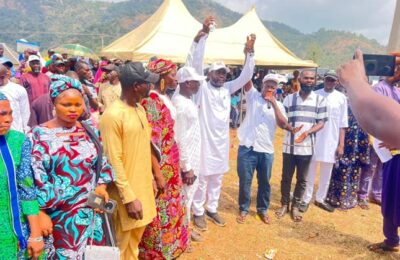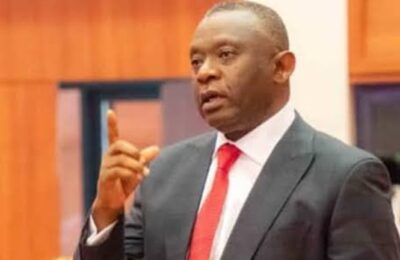On August 27, 1991, Nigeria’s map was redrawn by the military government of General Ibrahim Badamasi Babangida. From parts of Kwara and Benue States, a new state emerged, Kogi State, fondly called the Confluence State because it hosts the meeting point of Rivers Niger and Benue. Thirty-four years later, Kogi sits at a crucial juncture of its history. Has it fulfilled the promise of its creation, or is it still struggling to translate potential into performance?
The Promise of Creation
Kogi was birthed with high expectations. Its central location made it not just the “gateway” between the North and South, but also a vital link for commerce, transport, and politics. Blessed with abundant natural resources, from crude oil in Ibaji to iron ore in Itakpe to coal in Ankpa, limestone in Obajana, and fertile farmlands across Igala, Ebira, and Okun territories, Kogi seemed destined for greatness.
Its cultural diversity also promised a unique model of unity: a state where Igala, Ebira, Okun (Yoruba), Bassa, Nupe, Kakanda, and other groups could forge an identity around shared progress. Lokoja, the colonial capital and seat of Lord Lugard, was chosen as the state capital, symbolizing both history and the vision of modern Nigeria.
Moments of Performance
Over the years, Kogi has recorded some modest achievements. In education, it boasts multiple tertiary institutions: Prince Abubakar Audu University (Anyigba), Confluence University of Science and Technology Okene, Kogi state University Kabba, Federal University Lokoja, Kogi State Polytechnic, Colleges of Education in Ankpa, Okene and Kabba, and numerous private institutions. This has helped raise literacy levels and created hubs of intellectual activity.
In infrastructure, successive administrations have attempted to improve road networks, rural electrification, and healthcare, though with varying success. Governor Abubakar Audu’s early efforts in the 1990s left landmarks, including the establishment of the first state university and infrastructural expansion in Lokoja. More recently, industrial investments like the Dangote Cement Plant in Obajana and the crude oil exploration in Ibaji have placed Kogi on Nigeria’s economic map, creating jobs and contributing to IGR.
Culturally, Kogi has continued to showcase its rich heritage, from the Igala masquerades and festival traditions to the Ebira carnivals and Okun festivals, marking it as one of Nigeria’s most diverse and colorful states.
The Gaps and Unfinished Business
Yet, beneath these scattered successes lies a troubling reality: Kogi has largely underperformed compared to its promise.
Ajaokuta Steel Company, once touted as the bedrock of Nigeria’s industrial revolution, remains a haunting metaphor for unfulfilled dreams. Decades later, the plant sits idle, costing the nation billions and denying Kogi its rightful place as Nigeria’s industrial capital.
Infrastructure deficits remain glaring. Roads across the state are in poor condition, healthcare facilities are underfunded, and Lokoja, despite its symbolism, struggles with urban planning, water supply, and basic amenities.
Economic underutilization is another gap. With vast mineral deposits and fertile farmlands, Kogi should be a self-sustaining economic hub. Instead, it depends heavily on federal allocations, with internally generated revenue lagging far behind potential.
Politics and leadership have also hindered progress. Ethnic rivalries between the three major groups, Igala, Ebira, and Okun, have often defined political competition more than vision or development agendas. While democracy has deepened participation, leadership quality has too often fallen short, with corruption and mismanagement overshadowing good governance.
Security concerns, including kidnapping, banditry, and communal clashes, have worsened in recent years, discouraging investment and endangering lives.
Between Promise and Performance
Kogi at 34 is, therefore, a paradox. It has everything needed to be a model Nigerian state; location, resources, people, and culture. But its performance has remained inconsistent, a mix of progress in education and industry on the one hand, and failures in infrastructure, governance, and security on the other.
It is a state still waiting to rise to its true stature, held back by leadership challenges, ethnic politics, and underutilization of resources.
The Way Forward
For Kogi to move from promise to performance, some urgent steps are required:
Revive Industrialization, Ajaokuta Steel and other mineral resources must be harnessed through strategic partnerships, transparency, and political will.
Agricultural Revolution: With arable land, Kogi can lead Nigeria in mechanized farming and agro-processing.
Infrastructure Renewal: Roads, healthcare, water, and electricity must receive consistent investment.
Inclusive Politics: Leaders must rise above ethnic sentiments to build a collective Kogi identity.
Youth and Human Capital: Investing in education, skills training, and innovation is critical for long-term progress.
Security Strengthening: Robust community policing and intelligence-driven operations are essential to restore investor confidence.
Conclusion
At 34, Kogi State stands at a crossroads. It has shown glimpses of greatness, but it has also revealed the cost of squandered opportunities. The Confluence State must now choose whether to continue drifting between promise and performance, or to finally embrace the destiny for which it was created, to be a bridge, an industrial hub, and a model of unity and progress in Nigeria.
The next decade will determine if Kogi can finally turn its promise into lasting performance.
– Eneojo Herbert Idakwo writes from Abuja.




